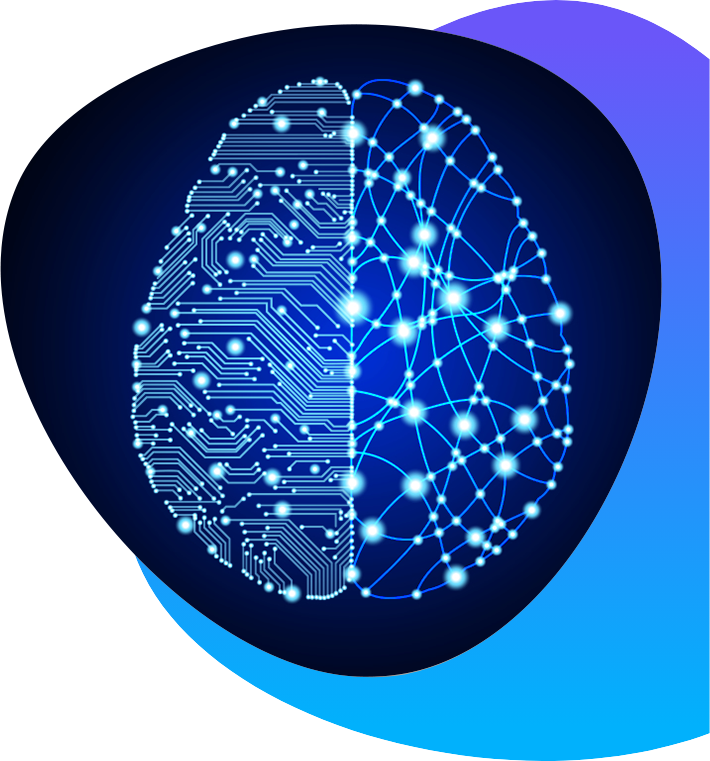A new treatment for Alzheimer’s disease
Watch a 2 minute video on our Alzheimer’s disease research
Why is a new treatment for Alzheimer’s disease needed?
Alzheimer’s disease is a debilitating neurodegenerative condition which causes deterioration of brain cells and a progressive decline in cognition and functioning, most notably in memory [1].
Alzheimer’s disease is the most common form of dementia [2], which is the second leading cause of death in Australia [3].
Dementia currently affects more than 485,000 Australians and is projected to affect more than 1 million Australians by 2058 [2].
There is currently no cure for Alzheimer’s disease and no known way to stop or reverse the progression of the disease [1,4].
Several medications for Alzheimer’s disease have been shown to reduce cognitive or behavioural symptoms for some individuals. However, these often have limited effectiveness, are associated with side-effects, and typically become ineffective as the disease progresses [1,4].
Using Transcranial Magnetic Stimulation to treat Alzheimer’s disease
Transcranial Magnetic Stimulation (TMS) is a safe and painless technique, which uses magnetic pulses to alter brain activity.
TMS is applied by placing a figure of eight coil on the scalp above the region of the brain to be stimulated, offering the opportunity to change brain activity without the need for medication or invasive surgery.
There is substantial evidence showing that TMS can be an effective treatment for various neurological and psychiatric conditions [5].
For instance, in recent years TMS has become an established treatment for depression, culminating in TMS being added to the Medicare Benefits Scheme in November 2021 as a therapy for treatment-resistant depression [6].
By stimulating key regions of the brain affected by Alzheimer’s disease TMS offers the potential to restore healthy neural network function for individuals with Alzheimer’s disease.
Participate in future research studies
If you wish to receive information about our upcoming research studies, please complete this enquiry form.
If you have any other enquiries about our research program, please contact us via email: [email protected]
The research team
Bionics Institute researchers:
Professor Kate Hoy (PI), Dr Oscar Murphy, and Danielle Holland.
External researchers:
External researchers: Professor Paul Fitzgerald (Australian National University), Associate Professor Bernadette Fitzgibbon (Monarch Mental Health Group), Dr Neil Bailey (Monarch Mental Health Group), Dr Sharna Jamadar (Monash University), Associate Professor Caroline Gurvich (Monash University)
Publications
1. Hoy, K. E., Emonson, M. R., Bailey, N. W., Humble, G., Coyle, H., Rogers, C., & Fitzgerald, P. B. (2022). Investigating Neurophysiological Markers of Symptom Severity in Alzheimer’s Disease. Journal of Alzheimer’s Disease, 85(1), 309-321.
2. Hoy, K. E., Coyle, H., Gainsford, K., Hill, A. T., Bailey, N. W., & Fitzgerald, P. B. (2021). Investigating neurophysiological markers of impaired cognition in schizophrenia. Schizophrenia Research, 233, 34-43.
3. Hoy, K. E., Bailey, N., Michael, M., Fitzgibbon, B., Rogasch, N. C., Saeki, T., & Fitzgerald, P. B. (2016). Enhancement of working memory and task-related oscillatory activity following intermittent theta burst stimulation in healthy controls. Cerebral cortex, 26(12), 4563-4573.
4. Hoy, K. E., McQueen, S., Elliot, D., Herring, S. E., Maller, J. J., & Fitzgerald, P. B. (2019). A pilot investigation of repetitive transcranial magnetic stimulation for post-traumatic brain injury depression: Safety, tolerability, and efficacy. Journal of neurotrauma, 36(13), 2092-2098.
Medical Disclaimer
This article contains general information relating to a medical condition. Such information is provided for informational purposes only and does not replace medical advice given by your healthcare professional.
References
- Breijyeh, Z., & Karaman, R. (2020). Comprehensive review on Alzheimer’s disease: causes and treatment. Molecules, 25(24), 5789.
- Dementia Australia, 2022. dementia.org.au/statistics. Accessed 01 August 2022].
- Australian Bureau of Statistics (2020). Causes of Death, Australia, accessed 01 August 2022.
- Husna Ibrahim, N., Yahaya, M. F., Mohamed, W., Teoh, S. L., Hui, C. K., & Kumar, J. (2020). Pharmacotherapy of Alzheimer’s disease: Seeking clarity in a time of uncertainty. Frontiers in pharmacology, 11, 261.
- Lefaucheur, J. P., Aleman, A., Baeken, C., Benninger, D. H., Brunelin, J., Di Lazzaro, V., & Ziemann, U. (2020). Evidence-based guidelines on the therapeutic use of repetitive transcranial magnetic stimulation (rTMS): an update (2014–2018). Clinical neurophysiology, 131(2), 474-528.
- Australian Government Department of Health and Aged Care (2021). Repetitive Transcranial Magnetic Stimulation therapy on the MBS. Accessed 01 August 2022.
- Hoy, K. E., Emonson, M. R., Bailey, N., Rogers, C., Coyle, H., Stockman, F., & Fitzgerald, P. (2022). Gamma connectivity predicts response to intermittent Theta Burst Stimulation in Alzheimer’s disease: A randomised controlled trial. medRxiv.
